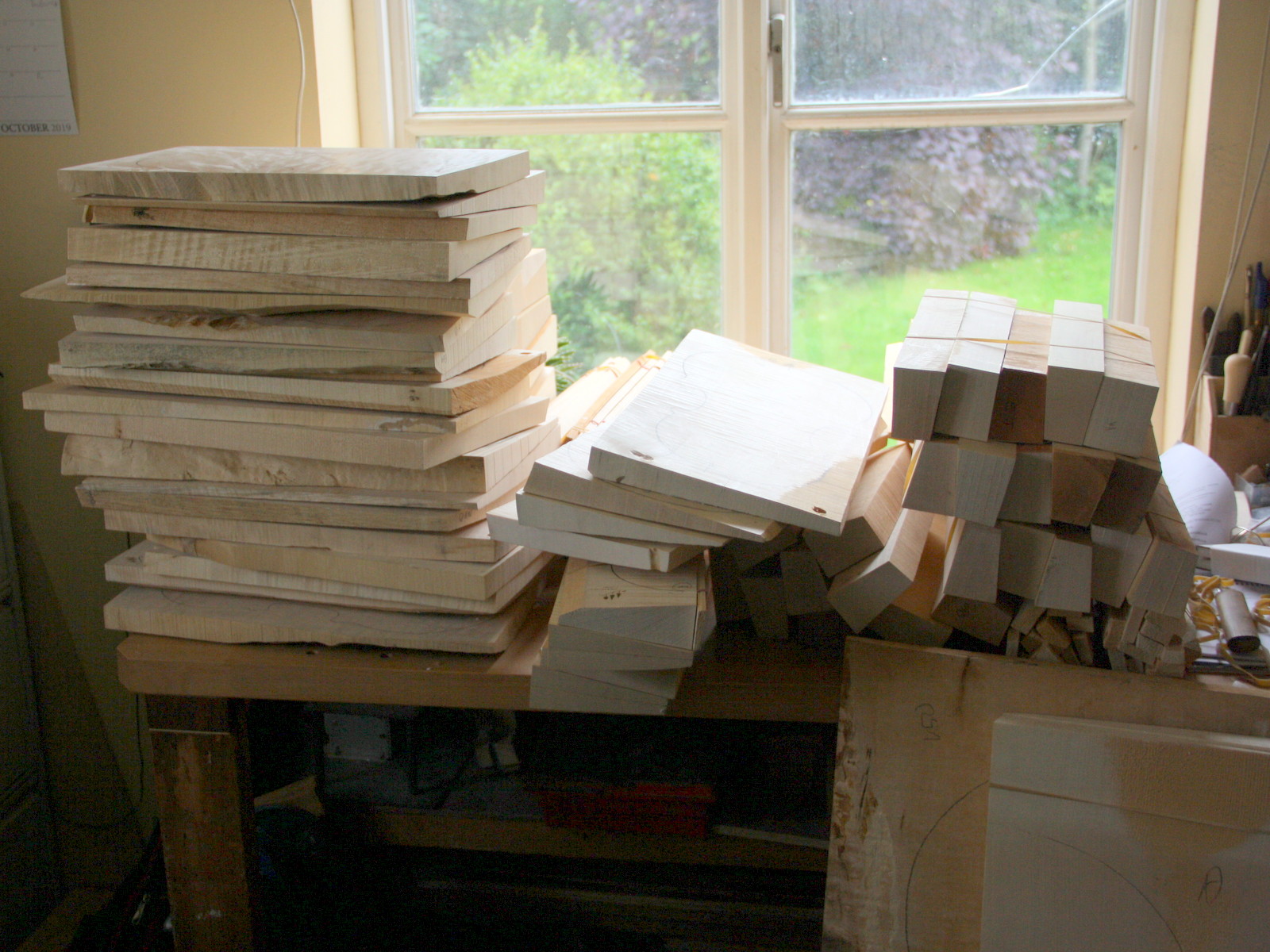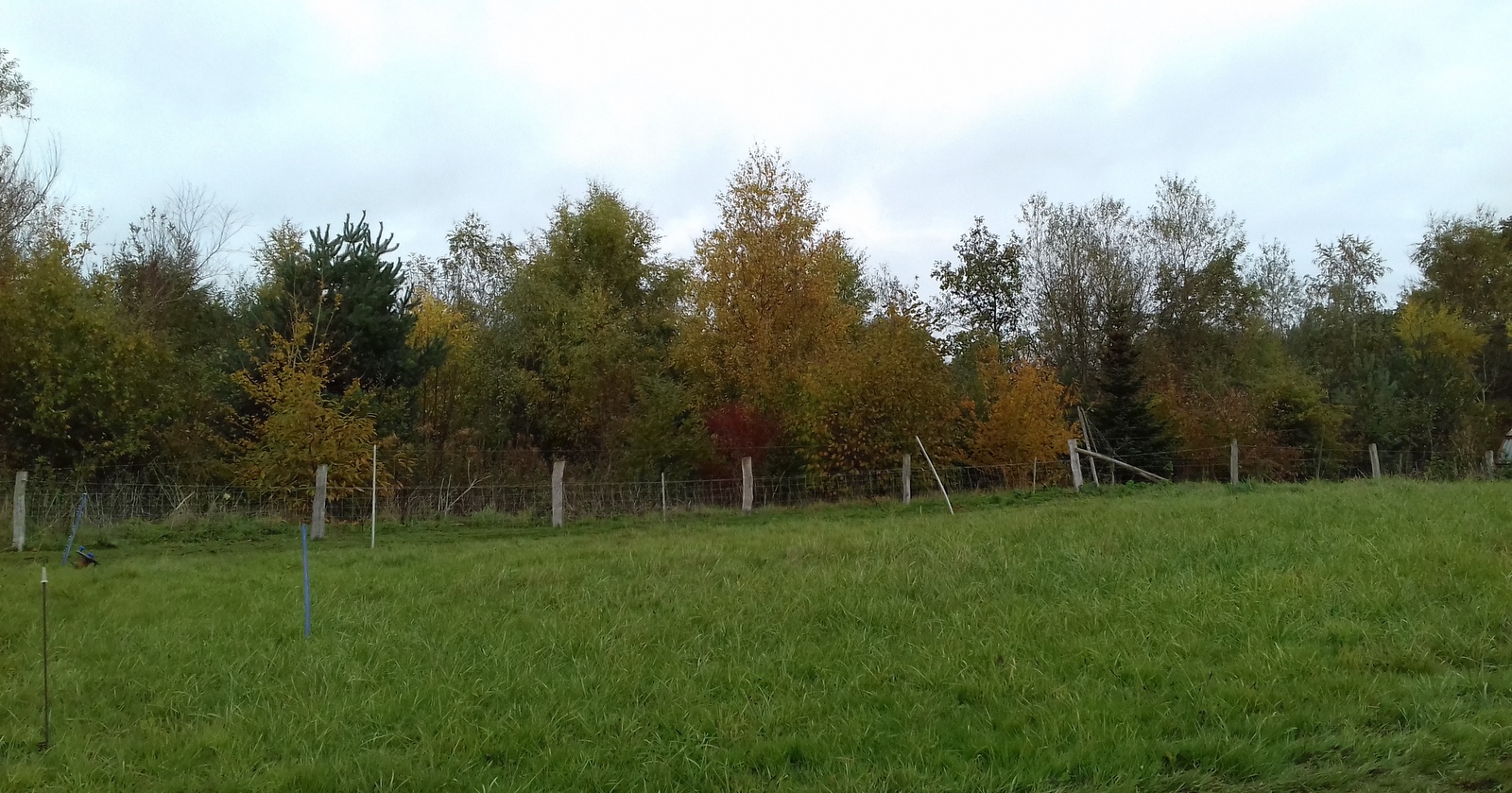The Green Violin
JANUARY, 2020
In October I went to visit Andreas Pahler in Bavaria to buy some more violin and viola wood. It has been a while since I last was there and because it is a long way, I chose as much wood as I could sensibly afford.
People tend to think instrument making is a slow activity, but it is lightening quick compared with the wood.

I remember Andreas giving a talk a few years ago, in which he showed a picture of a piece of quarter sawn spruce he had cut. [cut from the centre of the tree to the outside] The saw revealed an evenly grown slice of wood with regular grain lines, except at one side where he had sawn lengthways through a knot. The unusual thing about this knot was that instead of having a ragged end where a branch had broken off, this knot ended with a clean cut, so it only took the tree three years and three growth rings to grow round the cut and for the grain to become straight. From then on, for about 200 years, the grain continued to grow straight and even.
The significance of this observation is that the piece of wood came from a part of the tree 30 feet above the ground, which means that someone, 200 years ago, went to the effort of going up a ladder to remove some branches. When you look at the wood, the reason is obvious, it makes a stronger and more easily worked piece of wood, ideal for instrument making. Even if instrument making was not in the forester’s mind, in a pre-motorised world, that tree, or parts of the tree, would need to be dragged by oxen or horses, or floated down a river before it could be used. So having a piece of wood which would be probably be 50 % stronger, due to its lack of knots, meant that less weight of wood needed to be shifted.
As it turned out, it has been instrument makers who have benefitted from that tree and the work done two centuries ago, as well as musicians. How long musicians will benefit depends on how long the instruments will last, but based on my experience it will be a good long time, the oldest violin I have worked on having been made around 1660, and I remember a colleague in Germany having an Andrea Amati on the bench next to me which was a hundred years older than that.
The longevity of musical instruments, and the amount of effort that is put into a small amount of wood means that the violin’s green credentials are essentially very good.
However important that is, it is not what most people think of when they think of sustainability. In terms of trees, it is their origin which gets most attention.
The spruce Andreas gets comes from high up in the Alps. Whilst I was there he was answering messages from farmers who had trees they though might be suitable for making instruments, so the chain between forest and concert hall is short, and although few trees meet the quality requirements, compared with building houses or tables, only a few trees are actually needed.
Some of the maple, for the back, ribs and scroll, also comes from the Alps, but the best stuff grows in the Balkans. Whereas there are millions of spruce trees in the Alps, only a small percentage of maples anywhere have the figure [or flame] going across the grain which many makers and players find so attractive. Finding suitable trees is getting harder, partly because a lot go to China, often to make mediocre violins from wood which should command more care. There are also trees being cut down illegally in eastern Europe and sold out of the back of vans, another reason to go to an established sawyer of violin wood.

With fingerboards and pegs, the situation is worse, though at least the trade in African Blackwood is controlled, being on the CITES list of endangered species. African blackwood makes the best functioning pegs, so I get them from a peg maker who in turn gets the wood from an accredited source. Other woods, European woods, can also be used for pegs, such as boxwood which is usually treated to make it darker, and I have used pear, but they don’t work as well, nor I suspect, will they last as long as blackwood.
For fingerboards the standard wood is ebony, because it is very hard and resists the wear of the strings and the player’s fingers. There is also a long-standing fashion for absolutely black ebony, though ebony streaked with grey or brown is just as effective. The trade in ebony has been amongst the worst examples of exploitation and careless resource depletion, where one country after another has been cleaned out of its ebony, and most suppliers were, at the very least, evasive when asked about their sources. The demand for black ebony has also resulted in huge waste, as only one in ten trees meet the colour grade. Since you have to cut into a tree to find out the colour, the rest were left in the forest to rot. For some reason, ebony is not yet on the CITES list, but it probably should be. There is, however, some good news; the American guitar making company, Taylor, has now bought a wood mill in Cameroon, and is buying ebony of all colours, paying for it properly and is actively replanting. The other new departure is the manufacture of fingerboards from European woods, using high pressure to make something which works like ebony. I have one which I hope to try on my next instrument.
For the smaller pieces of ebony such as nuts and saddles, I have always used offcuts, mostly from old piano keys. When I was fourteen, I dismantled a broken piano [ I still have some of the walnut casing waiting for the right project!] and recently I was given two more sets from old pianos. Getting the most out of every piece of material is something common to most craftspeople, to use everything to its best effect, recognising the intrinsic worth of every individual piece -a part of careful craftsmanship.
Recently people have asked me about carbon fibre for musical instruments as an alternative to wood. Personally, that has no appeal, and, as in so many other instances, the magic new technological solution is offered as the way to solve an ecological problem. But in fact, the ‘ecological problem’ is just the product of short-term careless commercialism – the antithesis of careful craftsmanship.
In the case of carbon fibre, we also need to consider where those materials come from and what happens at the end of their useful life. At the moment old carbon fibre products go to landfill, the carbon fibres, bound together by plastic polymers being almost indestructible.
Compare that to an instrument made of wood; eventually they may be broken and beyond repair, but they can be burnt to keep someone warm or put outside to rot and nourish another tree. Until then, and for a long time to come, they can bring joy to those who play and listen, benefitting from wood that, perhaps in part, came into existence 500 years earlier.
